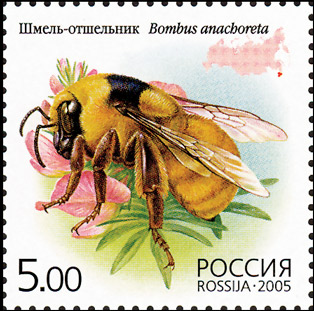We performed various laboratory bioassays to assess the effects of clothianidin on the survival and behavior of winter bees. Oral lethal and sublethal doses were administered throughout 12-day. The obtained LD50 values at 48, 72, 96 h and 10 days were 26.9, 18.0, 15.1 and 9.5 ng/bee, respectively. Concentrations <20 µg/kg were found to be sublethal. Oral exposure to sublethal doses was carried out for 12-day and, the behavioral functions were tested on the respective 13th day. Although slight reductions in the responses at the concentrations 10 and 15 µg/kg were observed, all tested sublethal concentrations had showed non-significant effects on the sucrose responsiveness, habitation of the proboscis extension reflex and olfactory learning performance. Nevertheless, chronic exposure to 15 µg/kg affected the specificity of the early long-term memory (24 h).
Source:
Abdulrahim T. Alkassab, Wolfgang H. Kirchner. Impacts of chronic sublethal exposure to clothianidin on winter honeybees. Ecotoxicology pp 1-11. First online: 18 April 2016
There is a very important shift in our understanding of the risk of neonicotinoid insecticides. Their risk may increase exponentially over time, rendering even very small amounts of neonicotinoids much more toxic than previously realized. Dutch researcher Dr. Henk Tennekes, with Dr. Francisco Sanchez-Bayo of Australia, have recently published a review article in the Journal of Environmental & Analytical Toxicology: "Time-Dependent Toxicity of Neonicotinoids and Other Toxicants: Implications for a New Approach to Risk Assessment" (attached). Their starting point is the Druckrey–Küpfmüller equation dt^n = constant (where d = daily dose and t = exposure time-to-effect, with n>1). The Druckrey–Küpfmüller equation established in the early 1960s for genotoxic carcinogens explains why toxicity may occur after prolonged exposure to very low toxicant levels. In essence, this equation states that the total dose required to produce the same effect decreases with decreasing exposure levels, even though the exposure times required to produce the same effect increase with decreasing exposure levels. Druckrey and Küpfmüller inferred in the late 1940s that if both receptor binding and the effect are irreversible, exposure time would reinforce the effect. Recently, similar dose–response characteristics have been established for the toxicity of the neonicotinoid insecticides imidacloprid and thiacloprid to arthropods. The paper reported above confirms that clothianidin has similar dose–response characteristics. Clothianidin follows the same pattern as imidacloprid and thiamethoxam. This is the third neonicotinoid that shows time-cumulative effects on bees.
The equation for clothianidin is
lnLT50 = 3.97 - 0.61lnLC50, with r2 = 0.995
therefore n = 1.63
Calculations were performed by Francisco Sánchez-Bayo, Ph.D.

- Login om te reageren
